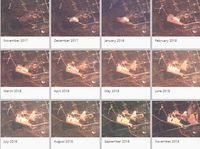Imagining a New Future for the Lower Snake River
Rivers shape the Pacific Northwest, flowing from snow-capped mountains and carving through rugged landscapes until reaching the wild Pacific Ocean. The mighty Columbia and Snake rivers connect the entire Inland Northwest and have supported human and …
Defending Our Nation's Wildlife
Defenders of Wildlife is committed to a future where North American wildlife and habitats are secure and thriving. We believe in the inherent value of wildlife and the natural world and our approach is straightforward: Working on the ground, in the …The Extraordinary Sea Otter
Southern sea otters play a critical role as a keystone species, which means they have a profound positive impact on the nearshore ecosystems in which they live. For example, by consuming sea urchins, sea otters help keep urchin populations in …Defending Cook Inlet Belugas
With their charming smile and white coloration, beluga whales are among the most iconic marine mammals in the world. Alaska is the only place in the United States where you can go to see belugas in their natural habitat. There are five populations of …Be Mindful of Beaver
Beaver are the classic keystone species. Their remarkable dam building creates deep ponds which are an essential component of aquatic habitats for diverse biological communities. However, their building instincts can sometimes conflict with human …Beaver Habitat Mapper
The Beaver Habitat Mapper is an interactive map application that allows users to overlay geographic information about beaver habitat onto a map of New Mexico. The tool is intended to assist local agencies and landowners with land management related …